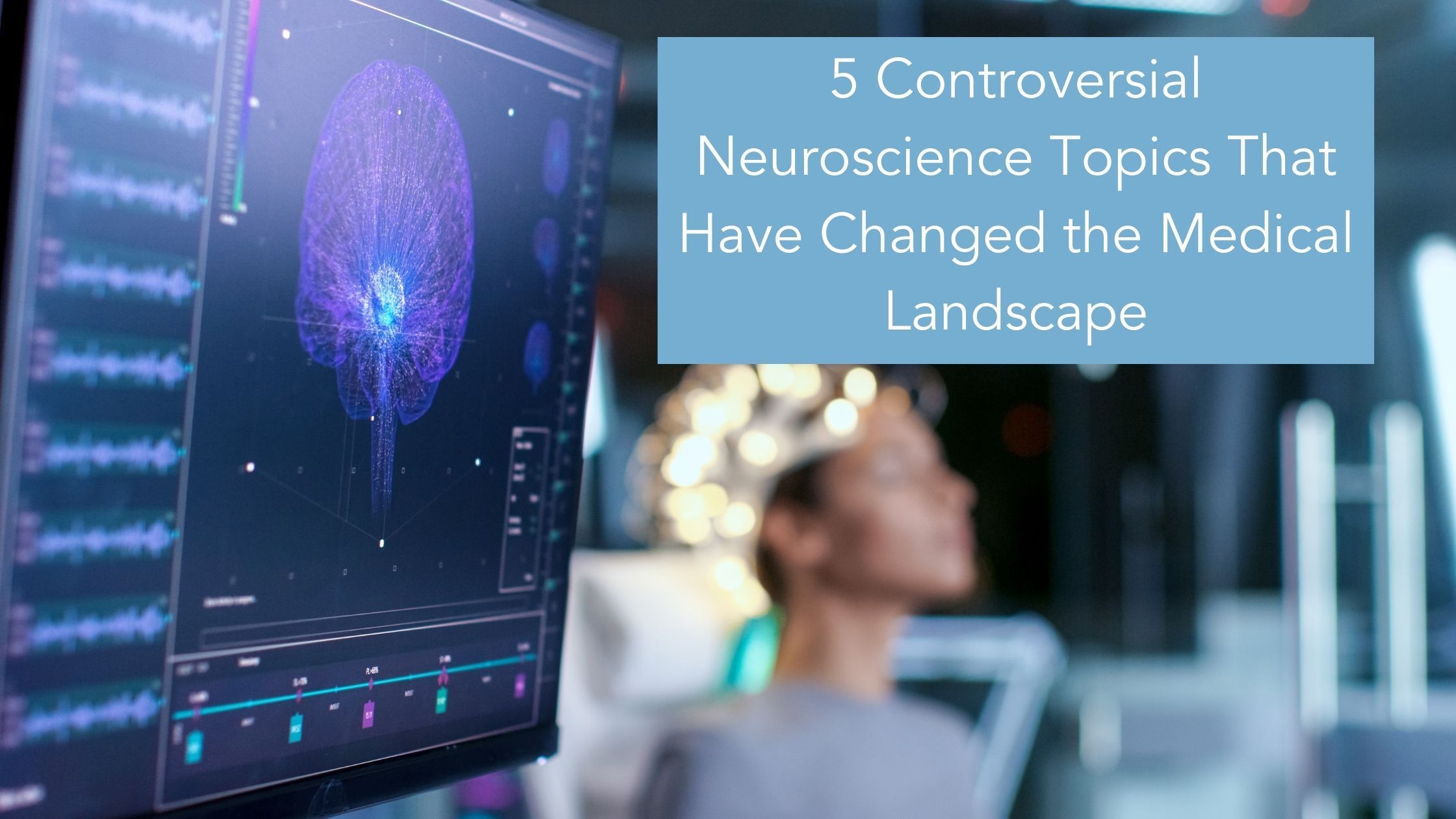5 Controversial Neuroscience Topics That Have Changed the Medical Landscape

According to the World Economic Forum, the global burden of brain diseases costs nearly $3 trillion—a number that’s expected to rise significantly as populations across the world live longer than ever before. In order to combat that type of growth, it’s imperative that researchers continue developments related to brain science and neurotechnology that not only help us understand the brain but address the pervasive problems plaguing our society.
As has been written about in outlets like Forbes, neurotechnology is not a new concept, dating back decades and including landmark discoveries around wide-reaching conditions like ADHD and insomnia. And long before neurotechnology, there was the general study of neuroscience, for which recorded evidence goes all the way back to 4000 B.C.
While we’re excited to look ahead to the tactics being put in place for the future, we would be remiss if we failed to highlight the monumental discoveries of the past that shook the neuroscience industry to its core.
In celebration of some of those breakthroughs, here’s our list (in no particular order!) of five controversial neuroscience topics that changed the medical landscape.
1. Alzheimer’s disease could be triggered by a virus
Alzheimer’s is one of the most debilitating (and frustrating) illnesses to experience, and as this research points out, many of the drugs created to control the symptoms of the disease have failed to reach production. But, just a few years ago, evidence broke that showed a potential connection to the herpes simplex virus type I, or the cause of a simple cold sore.
It appears that the infection can even live dormant in the body throughout one’s life until it’s reactivated by stress cues that damage the brain over time. Even more surprising is that it’s possible that Alzheimer’s could be transmissible. Beta-amyloid, one of the two major proteins that over-accumulates in brains affected by Alzheimer’s, “could potentially be transmitted via close contact with the brain tissue of someone who has the disease” reports Scientific American.
More research is needed, but if any of the above is true, it could indicate the need for substantial changes in both antiviral treatments and brain surgery.

2. Paralyzed patients walk again
The gift of mobility is one that most of us take for granted. But once it’s lost, there are few things harder to accept and overcome. In the future, though, that may not be a problem thanks to a recent marriage of medicine and technology. In 2018, the Mayo Clinic inserted an electrical implant into a paralyzed man who was eventually able to walk the length of a football field as a result. The implant, which works by inserting a neuroprosthesis into the patient’s spinal cord to skip over the site of the injury, has been used in several other cases since.
In addition to electrical stimulation, researchers have seen promise in the use of human stem cells to restore mobility. One study involving implanting stem cells into monkeys saw the cells synapse with neurons to restore natural movement. This type of treatment is many years away from being performed on humans, but the work that has already been done could provide a roadmap for future innovations.
3. The link between sugar and brain chemistry occurs quickly
It turns out that the sugar in your dessert might be going to more than just your teeth. In a study conducted in pigs, researchers found that “sugar alters brain chemistry after only 12 days.”
After giving the pigs a sucrose solution for an hour for 12 consecutive days, scans of the pigs’ brains found significant changes in the dopamine and opioid systems. More specifically, the authors pointed out that there were alterations in the “striatum, nucleus accumbens, thalamus, amygdala, cingulate cortex, and prefrontal cortex.” What does that mean? Brain stimulation is rampant in sugary foods, with the substance rewarding the brain’s circuitry in a similar way to how addictive drugs do.
Though some might discount the research because it was conducted on pigs, the researchers stand by their decision, saying “The pig is a good alternative because its brain is more complex than a rodent and […] large enough for imaging deep brain structures using human brain scanners.”

4. The gut-brain connection is stronger than we thought
There’s a reason why the gut has been nicknamed the “little brain.” Lined with more than 100 million nerve cells that enable communication between it and the brain, the gut is involved in much more than just digestion. Researchers have learned that enteroendocrine cells that give off hormones can link to neurons in the vagus nerve and communicate with neurotransmitters like serotonin. Some people even believe that this type of brain stimulation could eventually be a conduit to new treatments for conditions like depression and autism.
One of the other more anecdotal concepts tied to the gut-brain connection is related to the holidays. In general, we tend to feel happier during the holidays, and researchers have speculated that this feeling is potentially the result of eating and the impact a full belly can have on our brains.
5. The identification of new brain cells
If your mom ever told you that watching too much television was killing brain cells, you may be in luck. That’s because a paper published in Nature Neuroscience in 2018 announced the discovery of a new brain cell called the rosehip neuron.
According to coverage on the announcement, rosehip neurons are inhibitory neurons that “reduce the activity of other neurons.” Rosehip neurons, Medical News Today writes, “influence the activity of cortical pyramidal neurons, which account for around two-thirds of all neurons in the mammalian cerebral cortex.” It’s been noted that these neurons are not found in mice or other laboratory animals, which could indicate that they are uniquely linked to humans.
Brain stimulation and other facets of neuroscience are fascinating topics to look at, and it’s clear that we’ve come a long way from 4000 B.C. What happens next is anyone’s guess, but we couldn’t be more excited about it.

